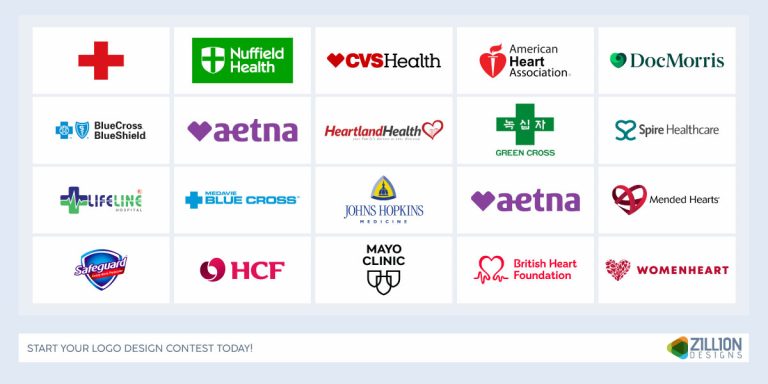Are you interested in taking your agricultural business to the next level and increasing revenue? If you are, you need to develop a branding strategy that targets relevant customers and gives them a new identity.
Farmers may associate branding with the images of fire-heated marks left on steers. Using this tagging method, it was possible to identify the farm from which the livestock originated. However, there was also a strong impression about the property that supported that impression. It is also important to brand with farm logos to identify the products produced by your efforts.
In addition, branding is the way that others recognize you in the world. Consider a few of the most prominent names in the agricultural industry like Cargill, Pioneer, Nutrien, and Olam. Due to the familiarity of their appearances and the consumer impression they leave behind, these names are widely known in supermarkets.
No matter if you are striving to become a national company or remain a regional one, branding can help you achieve your goals. So how can we do that? Well, let’s find out in today’s blog.
Image Source: zilliondesigns.com
What is Agricultural Branding?
The branding of agricultural products goes beyond a logo depicting a field of wheat or rows of corn, or the choice of a carefully selected font. In addition to these items representing your brand, the concept goes much deeper than that. The branding process encapsulates who you are and conveys that image to your target audience if done properly.
A successful agricultural branding program takes into account every aspect of farming and production. You can find inspiration for your farm logos within the industry as well.
Consumer attitudes are influenced by your mission and vision for your work, how you manage your farm and production facility, and how involved you are in local and charitable activities. Branding is what you do.
Image Source: zilliondesigns.com/radunicolae
Image Source: zilliondesigns.com/eisyandina
How to Brand Your Agricultural Business?
Here are some general steps to follow when branding your agricultural business or a farm:
1. Defining Your Brand Identity
To establish a lasting relationship with your audience, you must define your farm’s brand identity. Essentially, it summarizes your vision, values, unique selling proposition (USP), and understanding of the market you are targeting.
• Values and Mission
The mission statement of your farm should express the farm’s main objective and the values that guide its operations. For instance, organic farm logos can feature elements like water or seeds to send the right message to the audience.
You can convey the essence of your farm with a mission like “sustainable farming to provide fresh, healthy produce to the community.”
For example, look at the following example of Harvest Moon farm which states ‘A Gathering of Antiques & Handcrafted Goods’.
Image Source: zilliondesigns.com/raych
• Unique Selling Proposition (USP)
Find out what makes your farm unique, whether it is its specialty crops, sustainable farming methods, or excellent animal care.
• Target Audience
Understand the demographics, interests, and values of your audience when crafting your message. Prioritize their specific needs, such as a commitment to organic, local foods.
• Maintaining consistency across all touchpoints
Maintain a consistent visual appearance with logos and graphic design elements. Build trust by developing a consistent tone and messaging style.
Your farm’s brand identity should evolve, becoming an integral part of your customers’ lives when it is authentic and aligned with your values and beliefs.
2. Create a Strong Visual Identity
You should ensure that your farming business has a strong visual identity. It is crucial to create a brand style guide that ensures that the visuals on social media, website, merchandise, and packaging reflect the personality of your brand.
• Colors and Fonts
Make sure the colors you choose invoke the right emotions, and that the font you choose matches your tone.
Image Source: dribbble.com/Adnan Nizam
• Imagery
You can enhance your identity with icons, illustrations, and photography style to create an authentic and memorable image.
Image Source: dribbble.com/Olins Creative
• Packaging
Product sellers need to use packaging that features their logo prominently, adheres to the visuals they have chosen, and highlights any sustainable ways they use to manufacture their products.
Image Source: dribbble.com/FINAO® Agency
3. Use Storytelling to Your Advantage
In the case of farmers, storytelling is one of the most effective ways through which they can grow their businesses and reach out to customers. You can also leverage storytelling in social media campaigns to connect with Gen Z and younger audiences. Here are a few ways to consider.
Begin from your farm background. Please provide a brief history of your farm, the problems that you faced, and the achievements that you have made. The use of storytelling fosters a sense of credibility and rapport among the people.
Emphasize your core competencies. You should communicate to your prospective clients that you are environmentally friendly, support local communities, or practice organic farming. Loyal customers are likely to follow your content because they share the same values as you.
Image Source: dribbble.com/The art method
Product Stories. There is always a story behind every product; from the time it was sown to the time it is reaped. A brief description of how it is grown, and harvested and why it is so special should be included.
Stories from customers. Share the success stories of customers and use the testimonials. Products and services must be tested and verified in real-life situations in the field.
An insider’s view of the farm. Allow viewers to see what life is like on the farm every day. Make your business more human by sharing photos, videos, and anecdotes.
Using stories to build a connection with customers enables them to connect with your farm, ultimately increasing sales.
4. Establishing an Online Presence
In the current world where most people are connected to the internet, farmers need to be online to reach out to the customers and the market.
• Provide good UX with Web Design.
Focus on making your website interactive and easy to navigate. Make sure that it features your brand story, products, values, testimonials, and the customer that you have talked about above. The descriptions of the products and the images need to be clear. A mobile-responsive website will help you reach more people since it adapts to the size of the screen used.
Image Source: dribbble.com/Aisyah
• Social media engagement
Join the social networking sites and create a profile on the most used sites like Facebook, Linkedin, and Twitter. Post pictures, videos, and daily or weekly posts on the farm’s activities on various social media platforms. Reply to your followers, answer their comments, and make them feel connected to you and your social media page.
• Create helpful content
Blogging is one of the best methods through which you can pass your knowledge, ideas, advice, and experience to other farmers. Create appealing and informative content such as videos that depict life on a farm or how to prepare a certain meal.
• Design a Mobile app
Expand your market reach by creating a mobile application for your business. The app can help to enhance customer relations and also people can order from there and you take their suggestions and see if they want any changes.
Image Source: dribbble.com/Yi Li
• Search Engine Optimization (SEO)
Make your website more noticeable by enhancing its ranking in the search engine results. The most effective approach to improve the ranking is to incorporate the proper keywords into the content. If you have the capital and can hire an SEO specialist to do the job for you, then it is advisable to do so.
5. Practice Sustainability and Responsibility
Today’s agriculture must be sustainable and efficient to maintain the natural resources and food supply for future generations as well as for the longevity of the farming businesses.
Farmers can apply such principles to minimize their impact on the environment and increase the level of ethical management by using several practices. Some of the ways through which soil health can be conserved include methods like crop rotation and cover crops, water management, encouraging biodiversity, and reduction in synthetic chemicals.
The practice of regenerative agriculture, including no-till farming and carbon farming, helps lower carbon dioxide emissions and create a healthier environment.
It is also important that the company complies with certification programs like organic farming and fair trade to show that it cares for the environment. Other aspects that strengthen this commitment include the utilization of environmentally friendly resources, the proper treatment of animals, and the contribution to society.
Another important aspect of the quest for more sustainable and responsible farming is the need to keep on learning and adapting to changing climate conditions.
Image Source: dribbble.com/Pixelz
6. Engage with the Community
Farmer-community relations offer a platform for creating a symbiotic relationship that transcends the market domain. Interacting with the community also helps in building the reputation of a farm and also helps in the long-term sustainability of the farm.
• Workshops and farm tours
Arranging tours and workshops on your farm enables the members of the community to have a firsthand experience of farming. A sequence of such events offers an opportunity to demonstrate your farming practices, raise awareness on sustainability, and address questions. It is possible to enhance the level of trust within the community and create a feeling of togetherness by making the process of farming more understandable.
• Local events and farmer markets
Farmers are also able to directly engage with their customers through regional farmers’ markets and community events. Besides the sale of your farm produce, these functions provide avenues for talking and even building friendships.
Meeting your customers face to face not only strengthens their loyalty to your business but also allows you to explain your decision to use only fresh and local produce.
Key Benefits of Branding for Your Agricultural Business
A logo or slogan of the farm brand indeed provides the consumer with recognition and a sense of connection, but there are also other benefits such as:
Differentiating products. Branding, both at the business and product level, is a key component of differentiating your products and services from those of your competitors.
It is important to design your farm business logo, tagline, and brand visuals according to how you want your audience to think of your business. This is what can help them differentiate between your product or service.
Image Source: zilliondesigns.com/heddy28
Opportunity for better pricing. Pricing your products and services can be enhanced by leveraging your brand image. Creating a brand will give you the opportunity to charge higher prices, or premium prices, which will enable you to make more profit.
As an example, a study found consumers are willing to pay slightly higher prices for foods from small family farms. In their study, the willingness to pay of consumers increased when the product was identified as a regionally produced product or as having a logo associated with a state branding program. The AGreen Farms logo is a very good example.
Image Source: zilliondesigns.com/bendholque
Brand loyalty. Customers become loyal to a brand when it resonates with them emotionally and connects with them on a deeper level. A brand is characterized by its attributes – the story, the quality of the product, the relationship with the customer, and the reputation of the brand.
Your business, products, and professionally designed website will be sought out by customers, who will return to make future purchases. The true value of successful branding lies in this long-term outcome.
Image Source: zilliondesigns.com/ScottPerry
Popular Agriculture Branding Examples
Here are some popular agriculture branding examples for inspiration:
1. Cargill
Cargill is a family business that offers food, ingredients, agricultural solutions, and industrial products for people around the globe. The logo of Cargill Agriculture is a green leaf that looks quite vivid. The use of a leaf reflects the company’s commitment to sustainability, agriculture, and nature.
In the Cargill Agriculture logo, there are two dominant colors: black and bright green. While the black wordmark is quite plain, the bright green leaf is rather prominent. Green is also mostly used in agriculture logos because it is associated with growth, freshness, and sustainability. The name ‘Cargill’ is written in black bold font so that it is visible.
Image Source: seeklogo.com
2. Syngenta
Agricultural science and technology are at the core of Syngenta’s global agribusiness operations. After merging Novartis Agribusiness and Zeneca Agrochemicals in 2000, Syngenta has since become a global agricultural company.
As a unique logo, Syngenta incorporates the stylized leaf into its letter “G.” The stylized leaf represents the business’s focus on agriculture and plant science, as well as giving the logo and website a distinctive and memorable appearance.
Image Source: wikimedia.org
3. Corteva
Corteva Agriscience or Corteva Corporation is an American corporation that deals in the production of agricultural chemicals and seeds. It offers various products and services besides seeds, crop protection, and digital.
Corteva Agriscience is one of the world’s largest agriscience companies that is solely focused on agriculture. The goal of a company is to make the lives of consumers and producers better and advance future generations. There is a combination mark which is the Corteva logo, which symbolizes science, agriculture, and technology; the font is simple, bold, and cutting edge.
Image Source: logo.wine
4. Pioneer
Pioneer Seeds is a U.S.-based seed manufacturer. They are one of the leading producers of genetically modified crops that are insect and herbicide-resistant. Since 1926, Pioneer has demonstrated innovation and leadership in the agricultural field.
As part of this vision, the company also intends to become a pioneer in developing new methods of feeding a growing population. There is no doubt that Pioneer’s logo represents its identity as a company. An oval shape represents the global scope continuity and stability of the company’s operations.
Oval shapes are also associated with seeds and grains, which are the company’s core products. It represents both the company’s commitment to plant science and biotechnology and its commitment to the environment.
Image Source: wikipedia.org
Conclusion
Investing in the branding of an agricultural business is more than a marketing strategy; it is a crucial investment in the farm’s success and long-term sustainability. A well-established brand identity can provide a host of benefits that directly contribute to the growth and sustainability of a farm. So don’t wait any further; start today and follow the tips we have highlighted above for your purpose.
The post A Strategic Guide to Agricultural Company Branding appeared first on ZD Blog.




